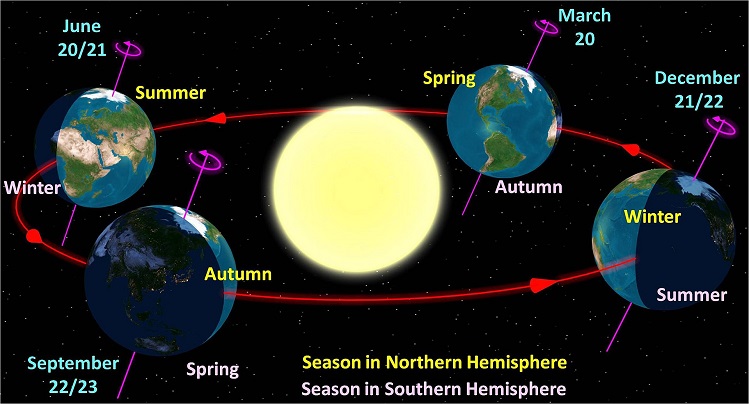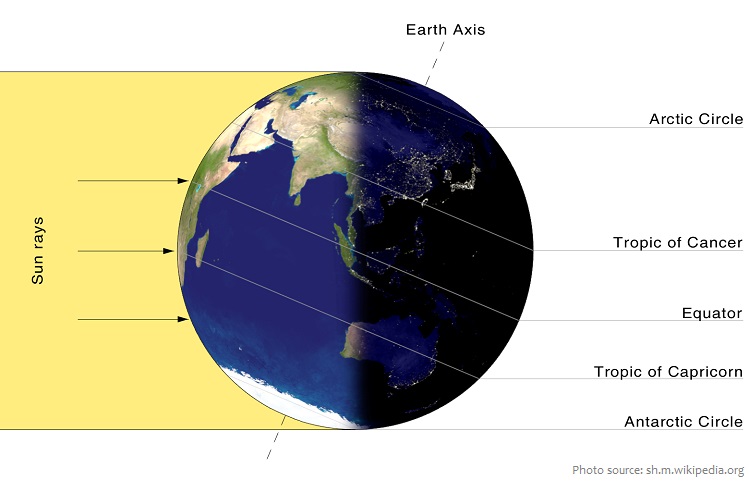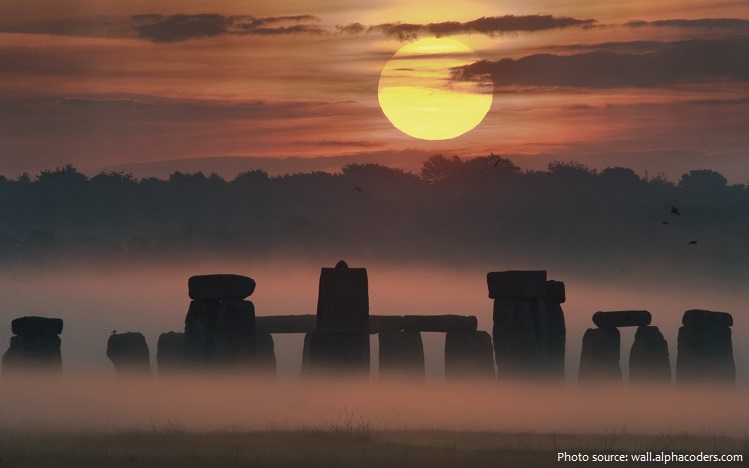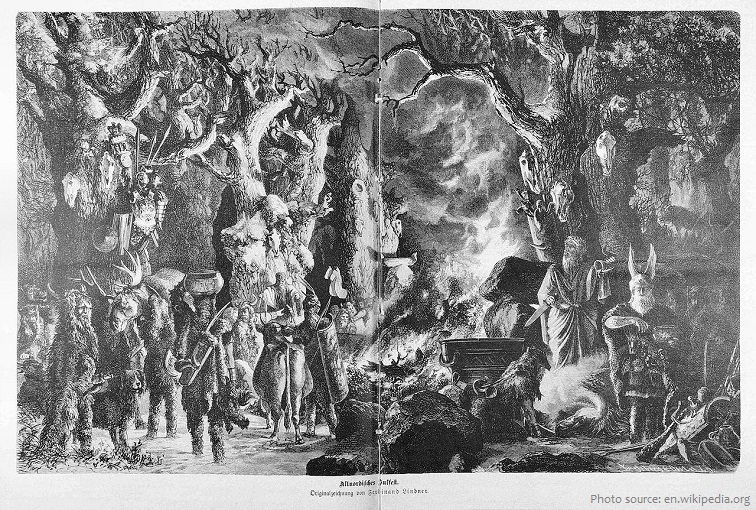
The winter solstice, also called the hibernal solstice is an astronomical phenomenon that marks the shortest day and the longest night of the year.
It happens two times during the year when the path of the Sun in the sky is farthest south in the Northern Hemisphere (between 21 and 23 December) and farthest north in the Southern Hemisphere (between 21 and 23 June).
The winter solstice occurs during the hemisphere’s winter. In the Northern Hemisphere, this is the December solstice and in the Southern Hemisphere, this is the June solstice.

Either pole experiences continuous darkness or twilight around its winter solstice.
After the winter solstice in the Northern Hemisphere, the days will get longer and the nights shorter until the summer solstice when things reverse.
Although the tilt of the Earth as compared to the plane of its orbit around the Sun is more or less constant (23.5˚), at the December solstice, the Northern Hemisphere receives the most indirect sunlight, causing cooler temperatures. The Southern Hemisphere receives the most direct sunlight, causing warmer temperatures, so it is summer there. At the June solstice, this effect reverses and the Northern Hemisphere receives the most direct sunlight, causing warmer temperatures, and the Southern Hemisphere receives the most indirect sunlight, causing cooler temperatures.

The solstice may have been a special moment of the annual cycle for some cultures even during Neolithic times. Astronomical events were often used to guide activities, such as the mating of animals, the sowing of crops and the monitoring of winter reserves of food. Many cultural mythologies and traditions are derived from this.
This is attested by physical remains in the layouts of late Neolithic and Bronze Age archaeological sites, such as Stonehenge in England and Newgrange in Ireland. The primary axes of both of these monuments seem to have been carefully aligned on a sight-line pointing to the winter solstice sunrise (Newgrange) and the winter solstice sunset (Stonehenge). It is significant that at Stonehenge the Great Trilithon was oriented outwards from the middle of the monument, i.e. its smooth flat face was turned towards the midwinter Sun.

Old solstice traditions have influenced holidays we celebrate now, such as Christmas and Hanukkah.
Soyal is the winter solstice celebration of the Hopi Indians of northern Arizona. Ceremonies and rituals include purification, dancing, and sometimes gift-giving. At the time of the solstice, Hopi welcome the kachinas, protective spirits from the mountains. Prayer sticks are crafted and used for various blessings and other rituals.
The ancient Roman festival of Saturnalia is perhaps the most closely linked with the modern celebration of Christmas. This festival happened around the time of the winter solstice and celebrated the end of the planting season. There were games and feasts and gift-giving for several days, and social order was inverted—slaves did not work and were briefly treated as equals.

In the recent Druidic tradition, Alban Arthan is a seasonal festival at the Winter solstice. The name derives from the writings of Iolo Morganwg, the 19th-century radical poet and forger. On the solstice, it has recently been speculated that druids would gather by the oldest mistletoe-clad oak. The Chief Druid would make his way to the mistletoe to be cut whilst below, other Druids would hold open a sheet to catch it, making sure none of it touched the ground. With his golden sickle, and in one chop, the Chief Druid would remove the mistletoe to be caught below. This ritual was recorded by Pliny (AD 24-79) in his Natural History (16.24), not as a part of a seasonal festival, but in the context of a sacrifice of two white bulls to invoke prosperity from the gods.
The Feast of Juul was a pre-Christian festival observed in Scandinavia at the time of the December solstice. Fires were lit to symbolize the heat, light and life-giving properties of the returning sun. A Yule or Juul log was brought in and burned on the hearth in honor of the Scandinavian god Thor.

Dong Zhi, the “arrival of winter,” is an important festival in China. It is a time for family to get together and celebrate the year they have had. Based on the traditional Chinese celestial calendar, the holiday generally falls between the 21st and 23rd of December. It is thought to have started as an end-of-harvest festival, with workers returning from the fields and enjoying the fruits of their labors with family.
Iranian people celebrate the night of the Northern Hemisphere’s winter solstice as, Yalda night, which is known to be the longest and darkest night of the year. Yalda night celebration, or as some call it “Shabe
Chelleh” (“the 40th night”), is one of the oldest Iranian traditions that has been present in Persian culture from ancient times. In this night all the family gather together, usually at the house of the eldest, and celebrate it by eating, drinking and reciting poetry (esp. Hafez). Nuts, pomegranates and watermelons are particularly served during this festival.
In Canada, Vancouver’s Winter Solstice Lantern Festival is a sparkling celebration of solstice traditions from around the world. Traditionally, the Secret Lantern Society assembles a wide array of music, dance, food and spectacular lantern-lit processions.